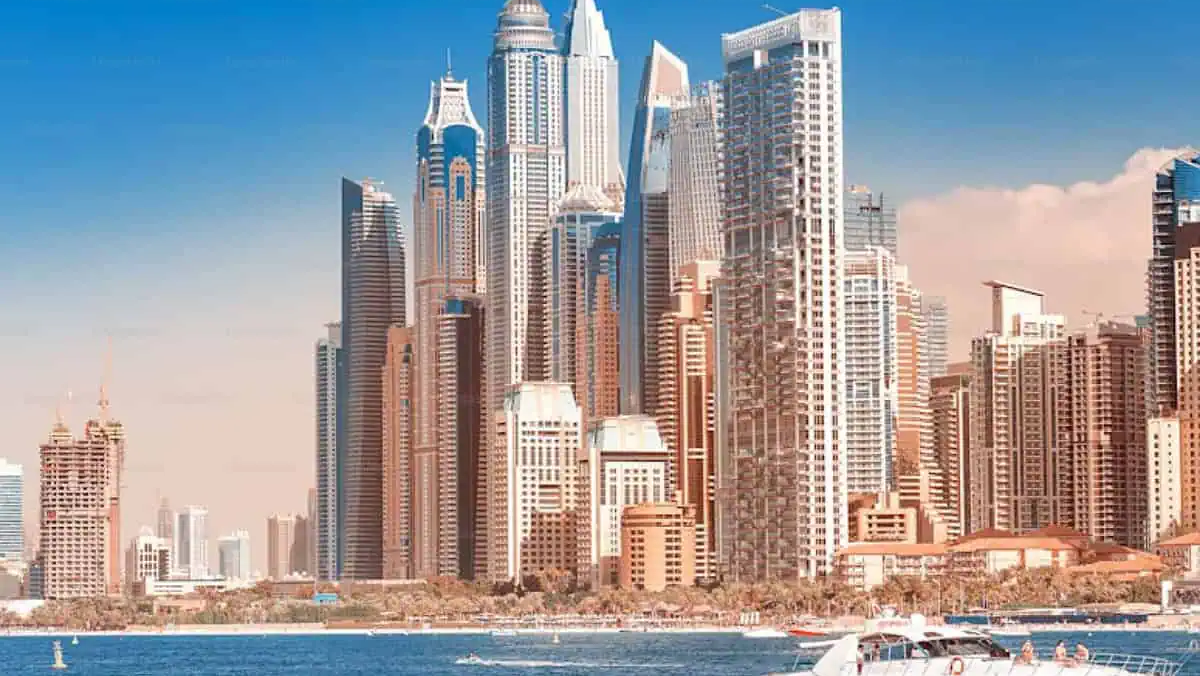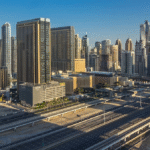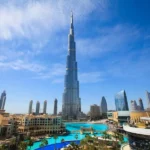Now Reading: Dubai Real Estate: 6 Tax Relief Zones Luring Global Property Buyers
-
01
Dubai Real Estate: 6 Tax Relief Zones Luring Global Property Buyers
Dubai Real Estate: 6 Tax Relief Zones Luring Global Property Buyers

Table of Contents
Tax Relief: Dubai’s real estate market is a global powerhouse, drawing investors with its tax-free environment, high rental yields, and investor-friendly policies. Unlike markets like New York or London, where taxes can erode 15-30% of returns, Dubai imposes no personal income tax, capital gains tax, or annual property taxes, allowing investors to keep 100% of rental income and resale profits.
The UAE dirham’s peg to the U.S. dollar eliminates currency risk, and the Golden Visa, offering 10-year residency for investments of AED 2 million ($545,000), adds further appeal. In 2025, Dubai’s market is booming, with Q1 transactions reaching AED 110 billion and a 19.9% price increase, per Dubai Land Department data.
This article highlights six tax-relief zones in Dubai that are luring global property buyers with high yields (6-10%) and significant tax advantages, making them ideal for U.S. and international investors.
1. Downtown Dubai: Iconic Luxury Hub
Downtown Dubai, home to the Burj Khalifa and Dubai Mall, is a magnet for global investors seeking luxury properties. Apartments start at AED 1.5 million ($408,000), offering yields of 6-7.2%. The absence of income and capital gains taxes ensures full retention of rental income and resale profits, unlike London’s 15% stamp duty or New York’s 5-6% combined taxes.
High occupancy rates (90%+) driven by tourists and professionals, plus 6-8% annual appreciation, enhance ROI. Off-plan projects like Emaar’s Burj Al Arab Views offer flexible payment plans. U.S. investors can deduct depreciation ($36,364 annually for a $1 million property) on IRS Schedule E to offset U.S. tax liability.
2. Dubai Marina: Vibrant Waterfront Investment
Dubai Marina’s canal views and cosmopolitan lifestyle attract global buyers, with apartments starting at AED 1.2 million ($326,000) and yields of 6-6.5%. The tax-free environment no rental income tax or capital gains tax—outshines markets like Singapore, where foreign buyers face 60% Additional Buyer’s Stamp Duty. High demand from expats and Dubai’s projected 25 million tourists in 2025 ensures occupancy rates above 90%. Off-plan projects like LIV Marina offer 7-8% appreciation by completion (2026). The 4% Dubai Land Department (DLD) transfer fee is the primary cost, far lower than U.S. transaction taxes. Verify developer credentials to avoid delays.
3. Jumeirah Village Circle (JVC): Affordable High Returns
Jumeirah Village Circle (JVC) is a fast-growing community offering apartments starting at AED 550,000 ($150,000) with yields of 7-8%, among Dubai’s highest. The lack of property taxes and VAT exemptions on residential sales (zero-rated for first sales within three years) make JVC a cost-effective choice compared to U.S. markets, where property taxes average 1-2% annually. Family-friendly amenities, like schools and parks, drive tenant demand, with occupancy rates near 85%. Off-plan projects like Svarn’s Sereno Residences offer flexible payment plans and 7% appreciation potential. Oversupply risks require careful developer selection.
4. Dubai South: Emerging Economic Hub
Dubai South, near Al Maktoum International Airport and Expo City, is a rising star for investors, with studios starting at AED 480,000 ($130,000) and yields up to 8.1%. The zero-rated VAT on first residential sales and no income or capital gains taxes ensure low acquisition costs and high returns, unlike New York’s 5%+ transaction fees. Proximity to the world’s largest airport (post-expansion) and Expo legacy zones fuels rental demand. Projects like Emaar South’s Urbana offer 7-10% appreciation by 2026.
5. Palm Jumeirah: Ultra-Luxury Haven
Palm Jumeirah, an iconic man-made island, offers apartments and villas starting at AED 2 million ($545,000) with yields of 6-7.6%. The tax-free environment no property, income, or capital gains taxes delivers superior ROI compared to Hong Kong’s 15% Buyer’s Stamp Duty. High demand from affluent tenants and tourists ensures occupancy rates above 85%. Off-plan projects like Sea Mirror provide early-bird pricing and 8% appreciation potential. Investments here qualify for the Golden Visa, reducing management costs. Due diligence on developers is key to avoid delays.
6. Dubai Creek Harbour: Smart City Future
Dubai Creek Harbour, with its waterfront lifestyle and upcoming Creek Tower, offers apartments starting at AED 1.3 million ($354,000) with yields of 6-7%. Zero-rated VAT on first sales and no taxes on rental income or capital gains make it a tax-relief haven, unlike London’s 28% capital gains tax for non-residents. Its eco-friendly design and proximity to Ras Al Khor Wildlife Sanctuary attract tenants, with occupancy rates near 90%. Off-plan projects like Emaar’s Creek Crescent promise 8-10% appreciation by 2027. Blockchain-based tokenization may offer fractional ownership, but verify VAT classification.
U.S. Tax Compliance and Benefits
Dubai’s tax relief no income, capital gains, or property taxes offers unmatched returns. A $1 million property yielding 7% generates $70,000 tax-free annually, versus $50,000-$60,000 after U.S. taxes. U.S. investors must report rental income on Schedule E, deducting expenses like depreciation ($36,364 annually for a $1 million property), maintenance, and management fees. Foreign assets over $50,000 (single filers) or $100,000 (joint filers) require Form 8938, and accounts exceeding $10,000 need an FBAR. Non-compliance risks penalties up to $100,000. The 4% DLD transfer fee isn’t creditable against U.S. taxes, but strategic deductions optimize returns. Consult a tax professional for compliance.
Risks and Mitigation Strategies
Dubai’s market is robust, with AED 306.3 billion in 2024 transactions and a projected 5-9% price increase in 2025. However, off-plan delays, potential oversupply in JVC, and global economic factors like oil price volatility pose risks. Mitigate by choosing trusted developers (Emaar, Damac), verifying escrow compliance with DLD, and working with RERA-registered agents. Diversify across zones to balance risk and monitor market trends via Dubai Land Department. Blockchain tokenization in areas like Dubai Creek Harbour requires VAT scrutiny to avoid unexpected costs.
Why Dubai in 2025?
Dubai’s Economic Agenda D33, aiming to double the economy by 2033, and 25 million projected tourists in 2025 fuel rental demand. Tax-relief zones like Downtown Dubai and Dubai South offer yields (6-10%) far exceeding global hubs like New York (2-4%) or Singapore (3-5%). Zero-rated VAT, no taxes, and Golden Visa benefits enhance ROI. These six zones Downtown Dubai, Dubai Marina, JVC, Dubai South, Palm Jumeirah, and Dubai Creek Harbour combine tax efficiency, high returns, and strategic locations, making them top choices for global buyers in 2025.
In conclusion, these six tax-relief zones lure global investors with unparalleled tax advantages, high yields, and growth potential. By leveraging Dubai’s investor-friendly policies, choosing reputable developers, and ensuring IRS compliance, U.S. investors can maximize wealth in one of the world’s most dynamic real estate markets. Tax Relief Zones
read more: Dubai Real Estate: 7 Investor Cities Offering Low Tax and High Yield






















